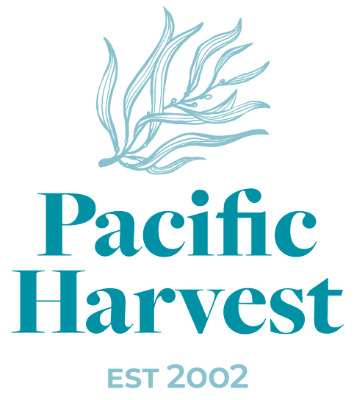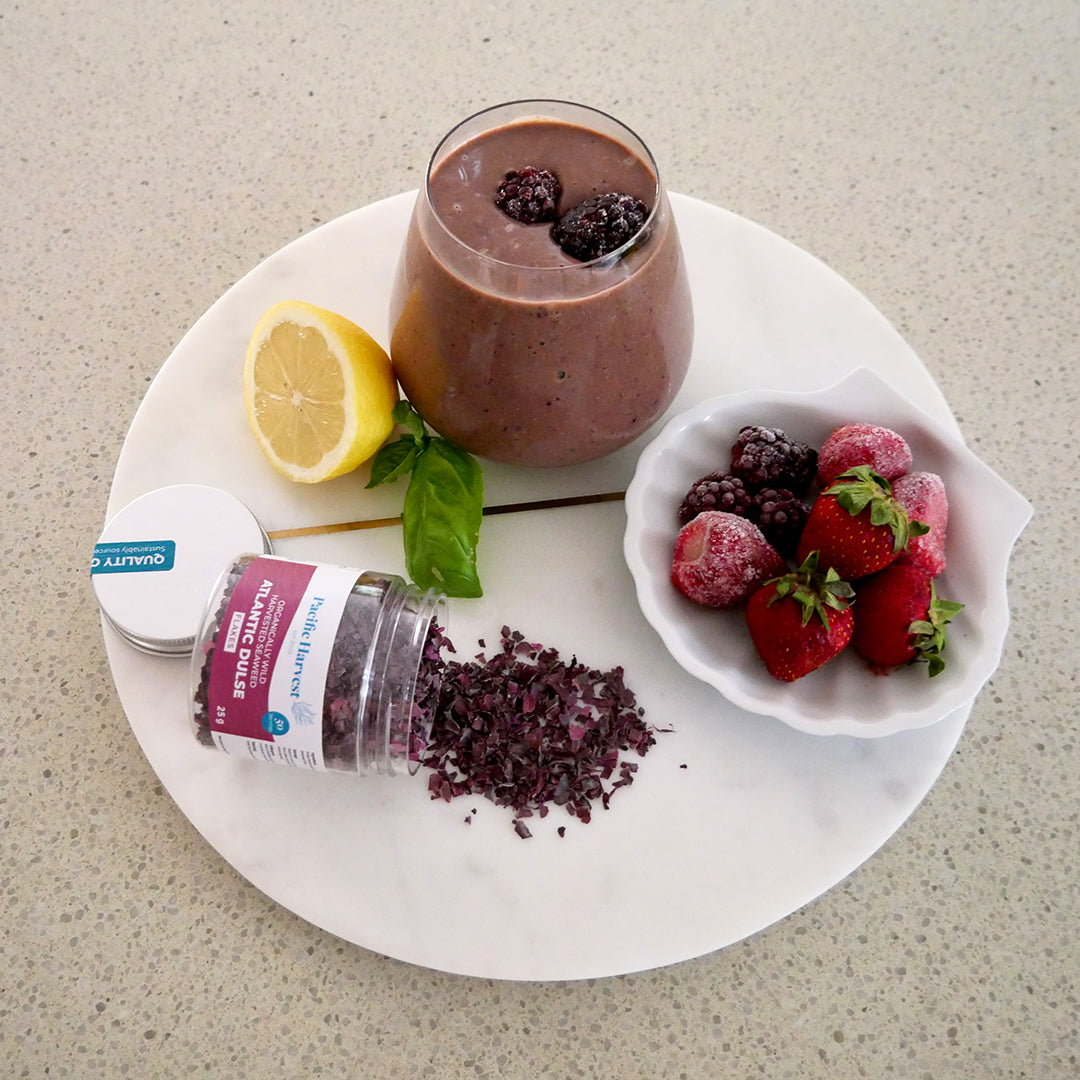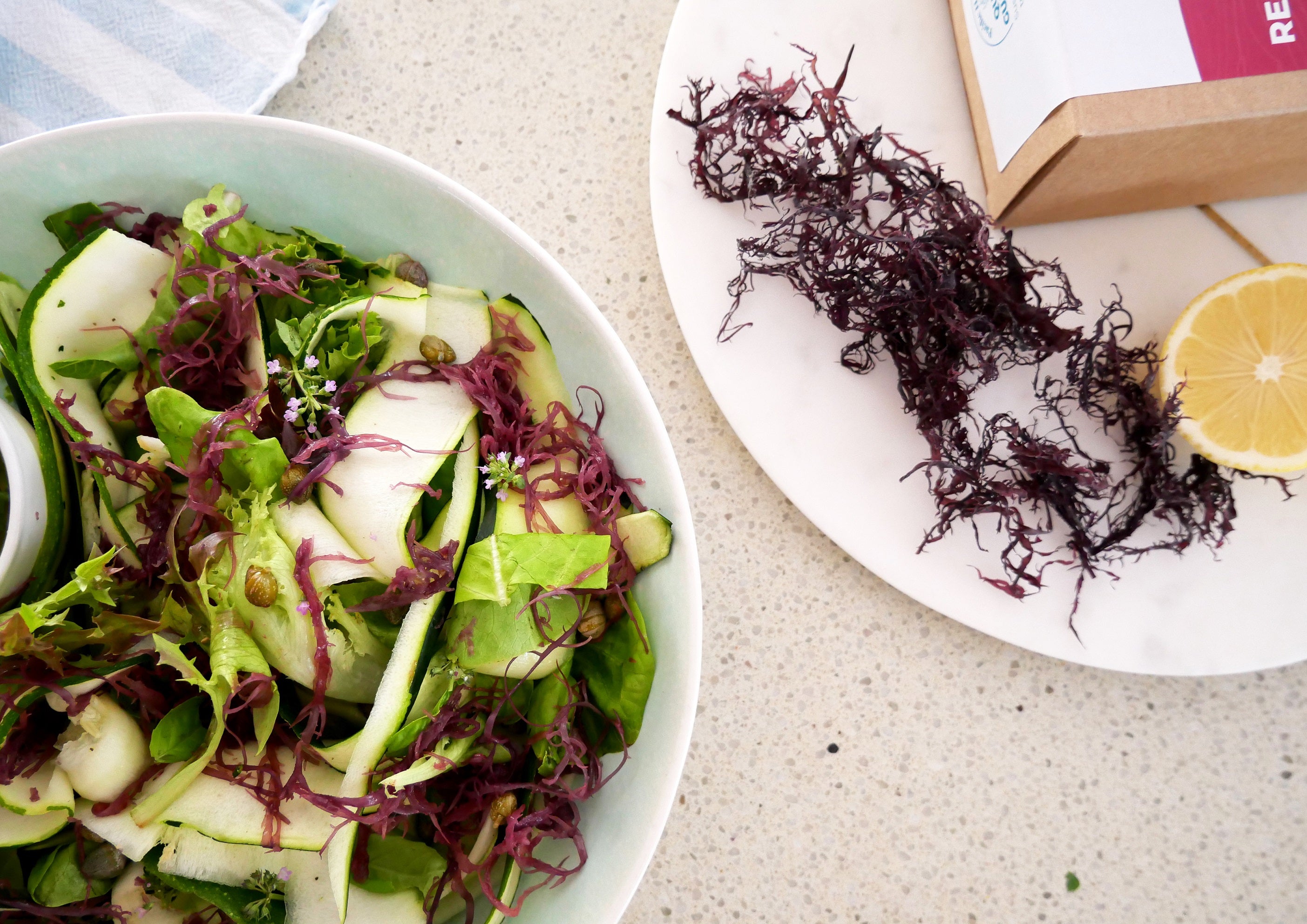We are all about seaweed beyond sushi! Here are 8 ways to easily add seaweed to your daily diet.
Think of seaweed as just a vegetable from the sea. Seaweeds are not a "new" fad, they have been eaten since humans were first on the planet as a nutrient-rich, delicious vegetable. Asian cultures have continued in their traditions, eating seaweeds regularly throughout the day, but many Western cultures are only recently rediscovering the excellent benefits eating them regularly offers.
Here are our 8 top tips to add seaweed to your everyday meals.
1. Use Seaweed to Replace Salt When Seasoning Your Meals
Seaweeds tend to have a relatively high potassium content, giving them a salty flavour. They make an excellent alternative to regular table salt. Their relatively high iodine and mineral content also means they offer a far richer nutritional value than simply using ordinary sodium chloride. Swap table salt for kelp granules, or a kelp salt or seaweed salt to boost your mineral content and add more umami flavour to your meals.
2. Add Seaweeds To Your Smoothies
Kelp powder or Irish Moss gel make wonderful nutrient-rich additions to a daily smoothie. Your body will thank you for the added nutrients, minerals and trace elements the seaweeds bring to your smoothies - read our blog on seaweed smoothies.
3. Use Seaweed Flakes As A Garnish
Pasta, pizza, poke bowls, and noodles are more visually appealing with a sprinkle of seaweed flakes or chopped seaweed leaves over the top as a garnish. Dulse flakes are gorgeous with omelette and potato dishes. For example, Sea Lettuce is an iron-rich alternative to parsley. Almost any savoury dish can be enhanced with a sprinkle of seaweed flakes.
Our Seaweed & Sesame Seasoning range is based on the Japanese furikake recipe, but our recipes contain no artificial ingredients, are vegan and are gluten-free. Furikake is traditionally used to season rice, but we think this is one of the easiest ways to add seaweed to almost everything – salads, soups, and savoury baking, we even suggest a sprinkle before roasting vegetables and let the seaweed caramelise over the vegetables.
4. Use Kelp To Marinade or as a Rub
Kelp is naturally tenderising due to its enzymes, which help break down cell walls. It also is a beautiful source of umami flavour, making it an excellent ingredient in rubs or marinades before BBQing, frying or roasting meats.
5. Use Kombu to Make Broths, Stocks & Soften Beans
Use a Kombu strip or leaf to make delicious, alkalising, nourishing stocks and broths. This is a vegan-friendly way to add wonderful umami flavour and dense nutrients to healing foods. The enzymes in kelp also make kombu or kelp an excellent addition to the water you are soaking beans in. They are said to aid digestion and reduce flatulence.
6. Use Agar or Irish Moss Gel as An Egg Replacement
Gelatin and Agar powder can be used as binding agents instead of eggs. However, they will likely create solid consistency in your finished product. Agar is a vegan alternative to gelatine and is full of excellent nutrients. Our Agar powder is unflavoured, so it will not impact the flavour of your cakes, brownies or cookies. Read our tips on working with Agar powder.
Agar is a beautiful ingredient in plant-based baking as an egg replacement or setting agent. Check our recipe section for a selection of cheesecake and dessert recipes.
7. Use seaweed to wrap food parcels or make your sushi sheets
If you love experimenting with new flavours, textures and colours, why not wrap seaweed leaves like komu, Atlantic Dulse or Wakame leaves around fish, chicken or food parcels before grilling or baking – check our recipe section for inspiration.
If you can’t tear yourself away from all things sushi, make your own sushi sheets! Don’t be limited to using nori – the traditional seaweed to make sushi sheets! Try Atlantic Dulse and Sea Lettuce combinations!
8. Seaweed is sensational in savoury baking
Experiment with any seaweed flakes ~ Power of Three Flakes, Atlantic Dulse (the vegan bacon) or Sea Lettuce flakes in your savoury baking – bread, muffins, sourdoughs, tarts and pies. Seaweeds also make a surprising addition to cookies and baking and are an excellent way to sneak additional nutrients into ‘treat’ foods.
Browse our recipe section for seaweed inspiration.




